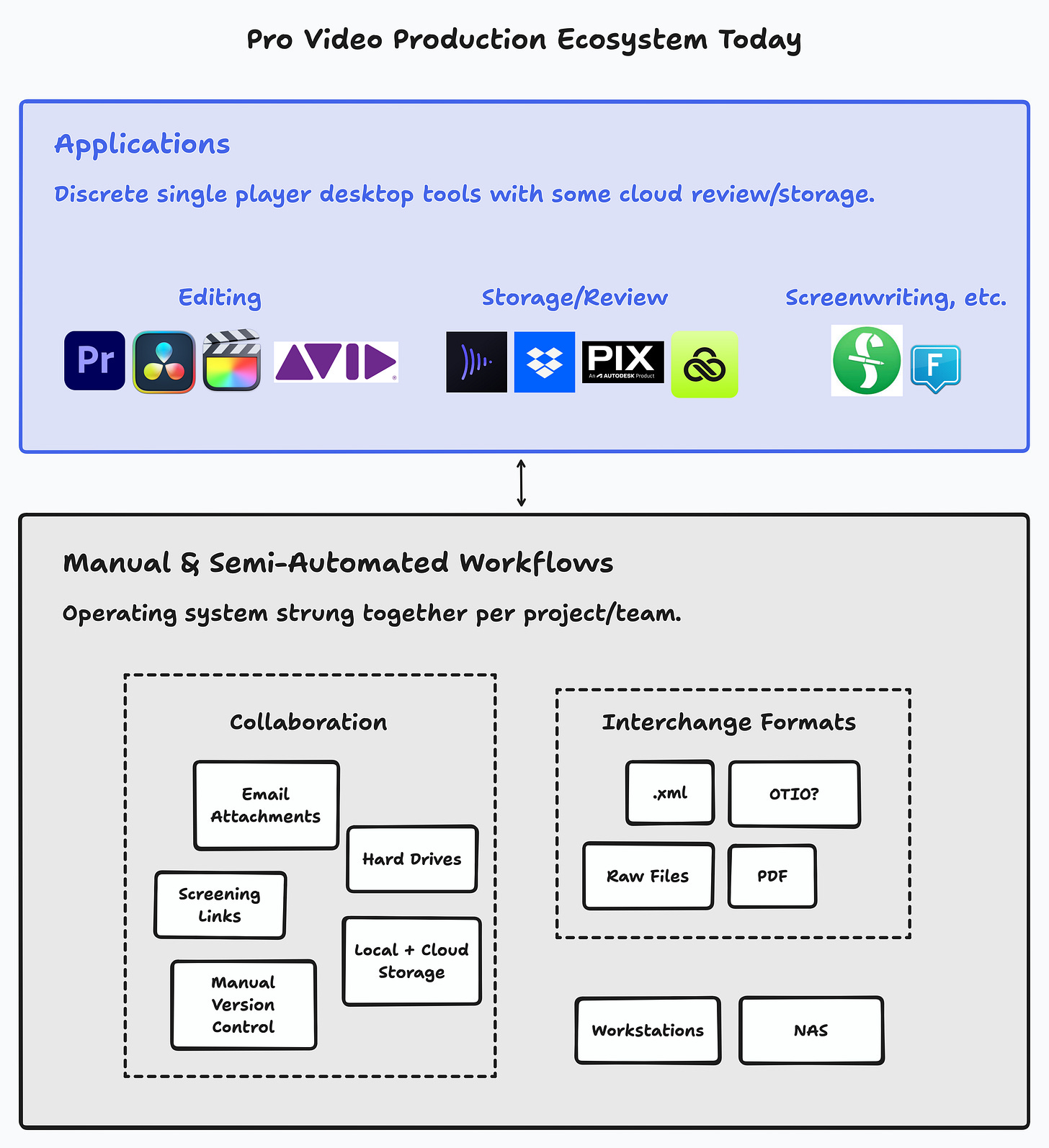Running Creative Apps on an Editorial Operating System
Sharing a set of primitives that abstract the complexity of video production.
We think incumbent creative tool developers are about to miss a massive opportunity in the pro video ecosystem. Professional video storytelling and filmmaking will revolve around a new platform–it's called the editorial operating system.
Tools and workflows for video production are currently built around a single player, desktop modality. Many post production facilities operated entirely on prem—until COVID-19.
Other industries have already migrated to collaborative, cloud based systems, where teams can effortless flow between applications and functions. Why hasn't video production?
Internally, tech + video giants like Netflix & Amazon have been building applications that wrap around the planning & management aspects of production, but creative tooling still lives alone on the desktop. (See Netflix tech blog: https://netflixtechblog.com/netflixs-production-technology-voltron-ab0e091d232d )
Planning & management app primitives can only take teams so far without being integrated with creative app primitives. This is where a new paradigm, the Editorial Operating System, comes in. It abstracts away operational complexity of running both production and creative tooling.
Pixar developed a version of this process, called "Edi-storial"—Since their films are CGI, they already building blocks (think storage, compute, and the timeline) in place to link together the different filmmaking processes through an editorial hub in a story driven way.
What we propose is extending this hub model to be a full fledged operating system with reusable components that abstract operational complexity of production tooling across hardware and software. Creative and production applications run on top.
Collaboration and access control primitives enable these apps to scale across teams.
Application primitives allow apps to interface with the story and library data models.
Cloud-based storage and compute primitives abstract away physical hardware.
Public APIs allow for 3rd party apps/plugins/integrations to extend the system.
Beyond this, AI agents can play a role alongside human collaborators, but need the infrastructure to access these tools.
Sequence's first product is this cloud-based editorial operating system.
The user applications today include a production management workspace, a media asset library manager, and a non-linear editor.
Our goal is to provide the platform that enables the next Pixar, or even more ambitiously, to be the next Pixar.
"Founder Steve Jobs, looking back on Pixar’s success, observed, “It blended the creative culture of Hollywood with the high-tech culture of Silicon Valley… The Pixar culture, which respects both, treats both as equals." This fusion is exemplified by the editor, who has always been both artist and technician—and whose role here fills the frame from the center out."
From 'Making the Cut at Pixar'
By Bill Kinder and Bobbie O’Steen, 2022
This studio of the future is half artists, half technologists, but 100% story driven. We think it will look a little like this:
Creating audio + visuals is getting easier. Our phone cameras are incredible, and the pace of generative video is disruptive. The tool you use to capture your story is up to the you, but an editorial OS can enable your process to scale to the limits of your team's imagination.








